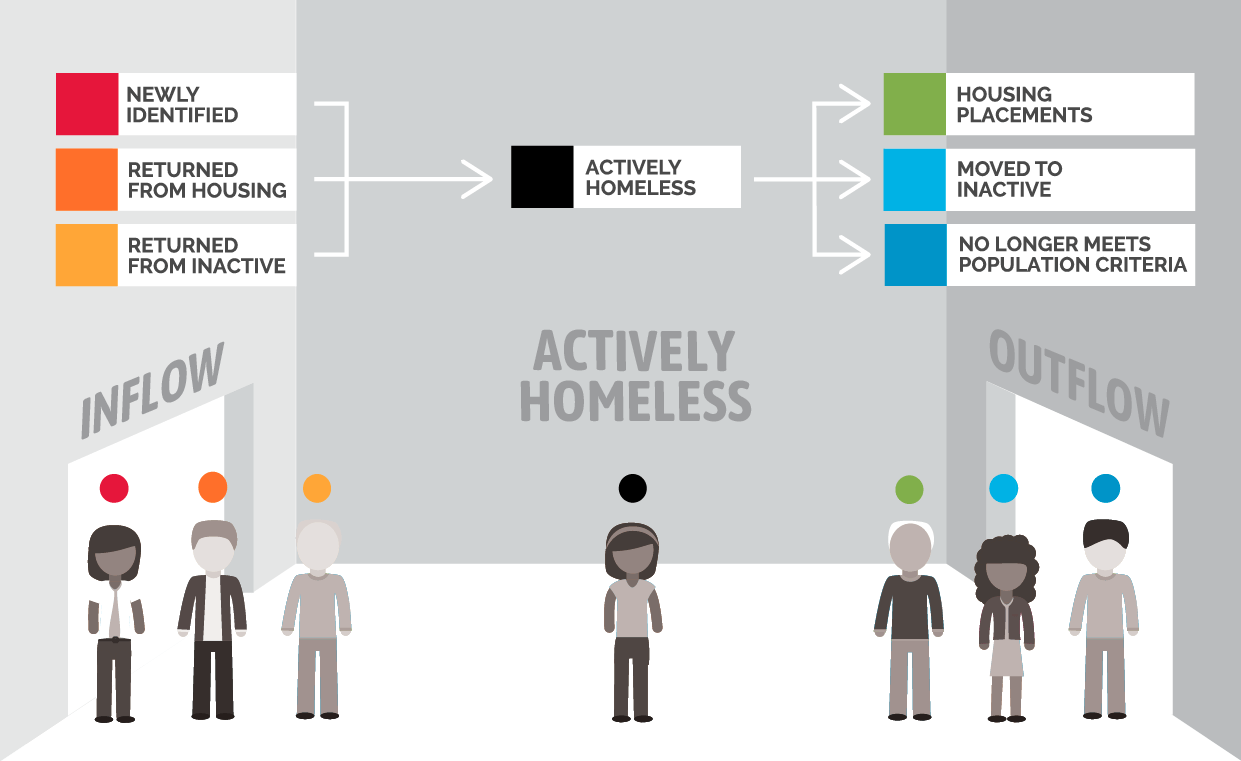Leaders in data technology, standards, and governance have a role to play in catalyzing an end to homelessness.
Across the country, communities have demonstrated that having comprehensive, real-time, person-specific data is necessary for accelerating housing placements, making targeted system improvements, and driving reductions in overall homelessness. Data-sharing between the homeless response systems and intersecting sectors, like health care, is also a vital step to prevent homelessness from occurring in the first place. The ability to share this information across systems creates space for improved policies, programs, and ultimately coordination of resources and care for individuals at risk of homelessness or experiencing homelessness.
However, most communities in Built for Zero report that technology is not currently a catalyst for ending homelessness. Together, we can change that.
Communities rely on a tool called a Homeless Management Information System (HMIS), which is mandated by the U.S. Department of Housing and Urban Development.
The tool, which is primarily designed for grant and compliance reporting for federally funded programs, is not traditionally set up to integrate data across jurisdictions or with other systems, like health care. As a result, communities must expend significant energy to produce the clean, usable data that is needed to collaborate, solve problems, measure progress, and drive reductions in homelessness. Our communities report that these onerous processes can overwhelm the already limited data capacity they have.
Leaders in data technology as well as public servants responsible for data standards and governance have a role to play in advancing robust solutions for these key data and technology challenges so communities can make progress toward ending homelessness.
Questions to ask
● What proofs of concept from social services (e.g. health care) hold useful tools that can be easily translated into solutions for homelessness response?
● What kinds of data standards must we integrate into the functionalities of these systems and tools? How do these standards coordinate across sectors such as health care or criminal justice?
● How will we improve the experience of people experiencing homelessness as a result of these changes? What are possible unintended consequences or balancing measures to consider?
● How will these systems assist our user communities in driving measurable reductions in homelessness, and how will we know?
Actions to take
1. Understand the possibility and limitations of data and technology in the homelessness sector.
Engage technology or policy teams to improve data systems and standards to support reducing and ending homelessness. Educate stakeholders on measures of quality data and utilization of analytics tools. Catalyze action towards redeveloping HMIS tools for cross-sector use. Mobilize HMIS tools to better leverage information and coordinate care while reporting population-level outcomes.
THE IMPORTANCE OF DATA
With accurate data, no one experiencing homelessness is overlooked for help, and communities can see if they’re making real progress — as a growing number of communities have proved. Accurate data is also key to identifying and correcting racial disparities in your community’s response to homelessness.
2. Promote adoption of improved data and technology standards and provide expertise.
Champion data standards that make the HMIS software market more competitive and facilitate improvements in care coordination, data integration, and the ability to report population-level outcomes. Spread information around the value of data standards and interoperability. Integrate these methods as widely-adopted practices through policy and product development norms.

3. Create pathways for data sharing across systems.
Support data-sharing agreements in place that enable user data to be accessed across supportive systems to homelessness response – such as health care, and other social services – to unlock the role of upstream and intersection systems in ending homelessness. Test tools, interfaces, and platforms that enable separate data systems to work cohesively. Common service requirements include housing matches, reporting, case management, and inventory management. Develop connected methods for sending and receiving data across regulatory guidelines and organizational specifications in the homelessness response system.
4. Create a closed-loop referral and care coordination system that connects health care and social service providers.
Develop this process at the local level as a pilot for a national solution. Ensure the pilot(s) align with national standards to ensure replicability. Also enable all stakeholders to receive explicit consent to share data between providers. Once a viable and repeatable model is clear, advocate for federal policy requiring universal adoption, following the model of SMART Health IT.
Key Resources
- Standardized set of health data and constituent data elements for nationwide, interoperable health information exchange
- HL7 Data Standards
- SMART Health IT was launched in 2009 with a New England Journal of Medicine article proposing a universal API to transform electronic health records (EHRs)
- Addressing the Homelessness Crisis with Salesforce
- Health and Homelessness: HMIS Best Practices
Homelessness is solvable.
Communities in the Built for Zero movement are proving it.
